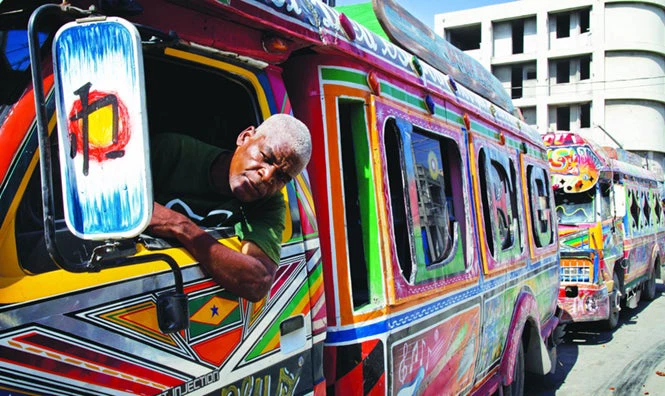
Lovelie prefers to pay more for a camion than take a tap-tap, because the former will take her directly to the market in 55 minutes. Tap-tap operators, to maximize revenues, limit the distance they operate to no more than 5 kilometers, so she would have to change three or four times, which is not easy with her bundles of goods. But she may not have a choice, if the camions are full by the time they get to her, as they often are.
Understanding the realities of urban transport as experienced by people like Lovelie was key for the forthcoming Haitian Urban Mobility Study and the Haiti Urbanization Review, two distinct but interdependent studies developed by the World Bank’s transport and urban development teams. Like Lovelie, countless urban residents in Haiti struggle to get around and access markets, jobs, or basic services. The urban mobility study, the first multi-modal study of urban mobility in Haiti to our knowledge, seeks to leverage the findings of the Urbanization Review to inform our analysis of urban transport in the country.
Due to capacity constraints and because there was no previous comprehensive study of mobility in large Haitian cities, the team had little data to work with. We filled the void by triangulating information from multiple sources, including mobile phone call data records, existing household surveys, field observations with experienced traffic engineers, as well as interviews with experts, operators, and travelers.
Thanks to this work, we now have a clearer picture of the reality of urban transport on the ground. Some of the key findings that emerged from the study are the following:
- Traffic management in large urban centers is woefully inadequate, leading to chronic congestion and slow travel speeds, particularly at peak hours.
- There is minimal assignment of institutional responsibility—let alone capacity—at either the national or municipal levels to manage traffic and organize services.
- The residents of Port-au-Prince are less mobile than residents of other major cities. Building on the analysis initiated by the Urbanization Review, we used call data records to gain a better understanding of where urban Haitians live and work, how many people are moving around, how far they travel, how many could reach employment centers or other strategic destinations within 60 minutes. The exercise revealed that only 42% of working age adults in Port-au-Prince on average travel more than 1 km per day. This is consistent with the finding from the urbanization review that cities in Haiti are not key drivers of poverty reduction: unlike the vast majority of other countries, Haiti has actually seen more poverty reduction in rural areas than in cities.
- Haitian households across all income groups spend very little on transport compared with other countries—only 3.1% of total household expenditures according to a consumer survey from 2012.
- The performance and appeal of urban transport systems is lagging due to a combination of factors such as excessively short routes (as described above), disorganized services, and unpredictable journey times. This suggests that, if urban Haitians are traveling less than their counterparts in other countries, it is primarily because services are inadequate.
- Port-au-Prince is a fragmented metropolis; most residents don’t venture much beyond their own neighborhoods. The fragmentation of Port-au-Prince is both a cause and a symptom of transport challenges.



Join the Conversation